The Intel SSD DC P3700 Review Part 2: NVMe on Client Workloads
by Anand Lal Shimpi on June 10, 2014 12:07 AM EST- Posted in
- Storage
- SSDs
- Intel
- Intel SSD DC P3700
- NVMe
Random Read/Write Speed
The four corners of SSD performance are as follows: random read, random write, sequential read and sequential write speed. Random accesses are generally small in size, while sequential accesses tend to be larger and thus we have the four Iometer tests we use in all of our reviews.
Our first test writes 4KB in a completely random pattern over an 8GB space of the drive to simulate the sort of random access that you'd see on an OS drive (even this is more stressful than a normal desktop user would see). We perform three concurrent IOs and run the test for 3 minutes. The results reported are in average MB/s over the entire time.

Our enterprise look at the P3700 focused on steady state 4KB random write performance, but surprisingly enough our short burst/8GB LBA space testing puts the P3700 at a very similar performance level. Here the P3700 is more than twice as fast as the closest SATA competitor, which is amazing despite the low queue depth of our test. I also included the old X25-M G2 to show just how far we've come - the P3700 is nearly 15x the speed of Intel's first generation MLC SSD controller.
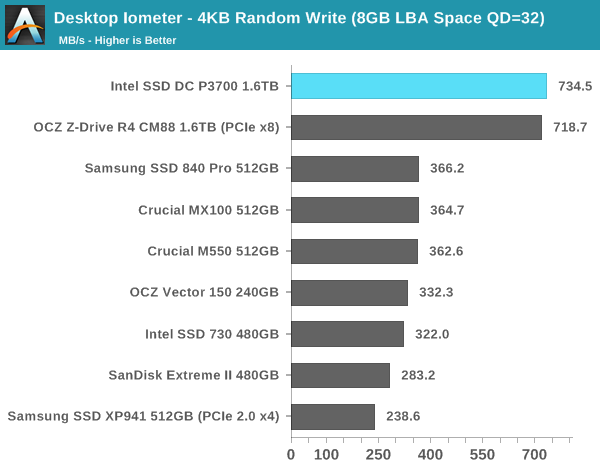
At a higher queue depth the Z-Drive R4 is able to catch up to the P3700, but being able to deliver excellent random IO performance even at low queue depths is a staple of a good client drive.
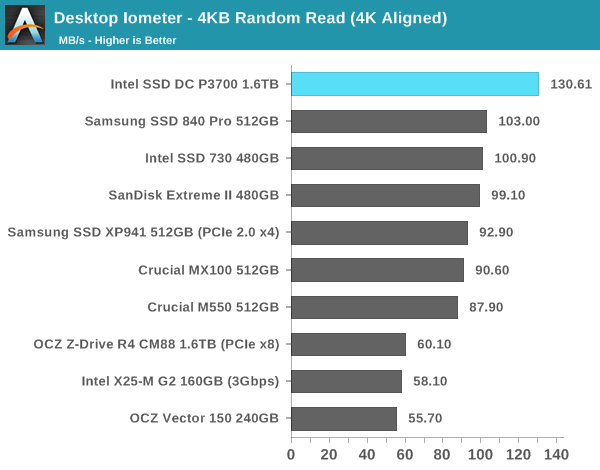
Random read performance is better than anything else here, but there's a limit to how much parallelism you can extract from a low queue depth random read workload.
Sequential Read/Write Speed
To measure sequential performance we run a 1 minute long 128KB sequential test over the entire span of the drive at a queue depth of 1. The results reported are in average MB/s over the entire test length.
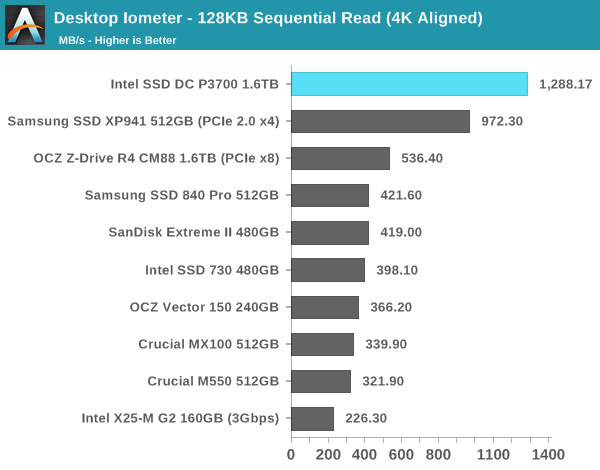
Once again we see the P3700 does extremely well at low queue depths, here its sequential read performance is substantially better than anything else.
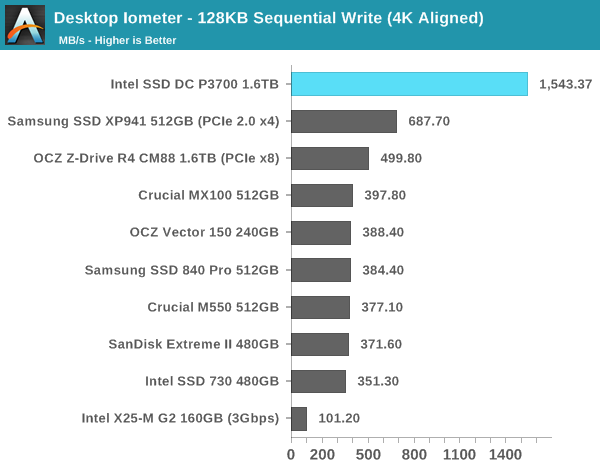
Sequential writes are even more impressive. We typically never see this sort of performance at a queue depth of 1. The P3700's 18-channel controller and firmware do a good job of splitting up write requests across as many parallel die as possible. Once again comparing the P3700 to the old X25-M G2 we see 15x the performance in 6 years.
AS-SSD Incompressible Sequential Read/Write Performance
The AS-SSD sequential benchmark uses incompressible data for all of its transfers. The result is a pretty big reduction in sequential write speed on SandForce based controllers. At a higher queue depth the P3700's performance scales even further. It used to only be possible to see these numbers on PCIe SSDs that leveraged multiple controllers.
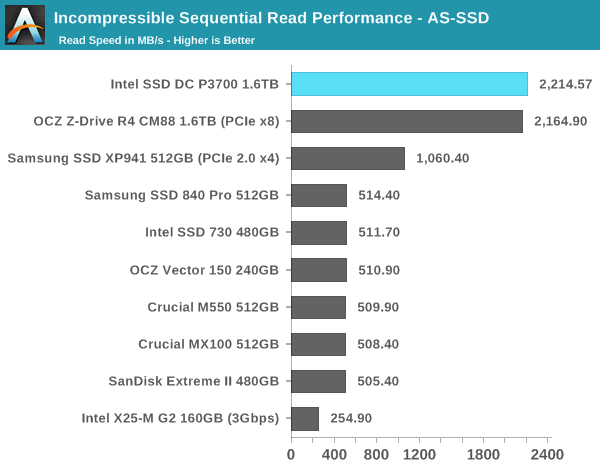
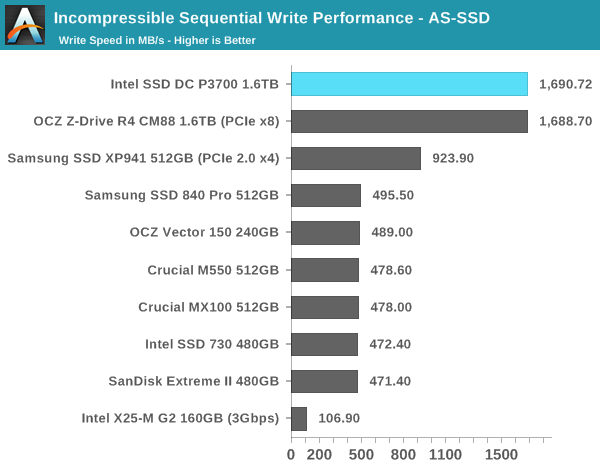










36 Comments
View All Comments
hpvd - Tuesday, June 10, 2014 - link
if OSX and Linux Boot is already possible, the Bios should already be fine !?DanNeely - Tuesday, June 10, 2014 - link
Doesn't OSX only support UEFI?xMoe - Sunday, June 15, 2014 - link
OSX on Intel supports EFI - IIRC - though Apple may have a slightly different "flavor" ... 1058 and lower support Open Firmware - if you have an old rig -if you - or anyone is interested - here is more info ---
http://en.wikipedia.org/wiki/Apple%E2%80%93Intel_a...
http://en.wikipedia.org/wiki/EFI_System_partition
http://wiki.osx86project.org/wiki/index.php/Apple&... - last updated December 02, 2011.
http://en.wikipedia.org/wiki/Extensible_Firmware_I... <- strangly this lacks any specifics on Apple tech and/or standard (or lack there of).
http://en.wikipedia.org/wiki/GUID_Partition_Table <- slightly OT - but going over drive partitions - tables MBR, GPT, etc...
althaz - Tuesday, June 10, 2014 - link
Aha, I hadn't tried it since 8.1 came out, didn't realise they'd added it :). Awesome!hpvd - Tuesday, June 10, 2014 - link
so there seem to be two differnt drivers available: one Windows included and one from Intel.Each seem to give a completly different performance for this Device:
see here: http://www.pcper.com/reviews/Storage/Intel-SSD-DC-...
(at least with the tested versions)
=> the question is: can we have both already TODAY?
Great Performance AND Boot support (using the same driver)?
hpvd - Tuesday, June 10, 2014 - link
and which driver and which version is used by anandtech for reviewing P3700?Ryan Smith - Tuesday, June 10, 2014 - link
The Intel driver. The latest (and currently only) version: 1016sorten - Tuesday, June 10, 2014 - link
I don't see any reference to OSX here:http://en.wikipedia.org/wiki/NVM_Express#Operating...
UltraWide - Tuesday, June 10, 2014 - link
The barrier to entry is the high price. Everything else is top notch.nathanddrews - Tuesday, June 10, 2014 - link
Hence, the P3600 and P3500.